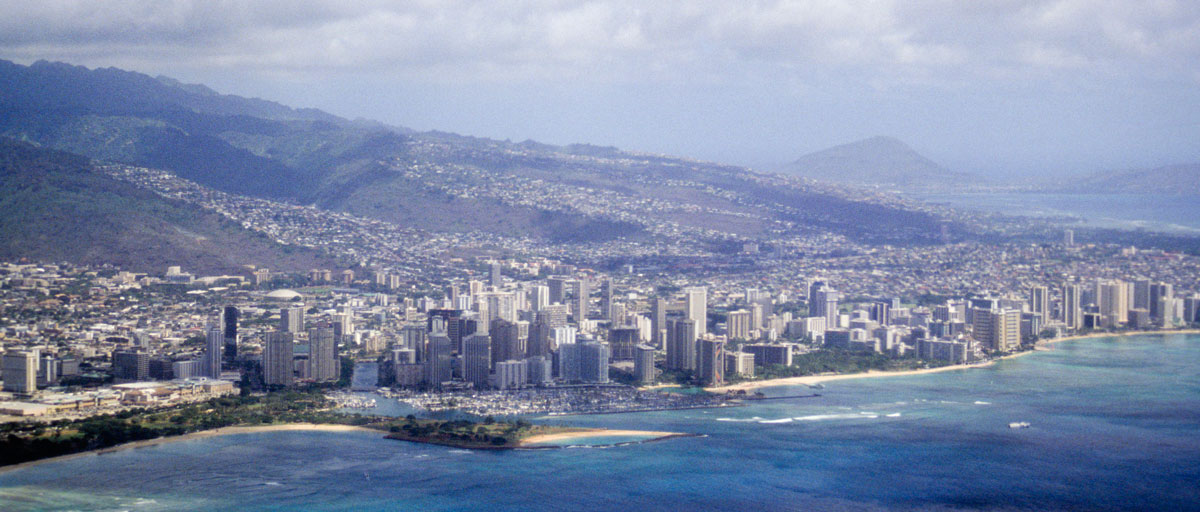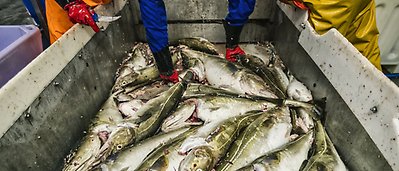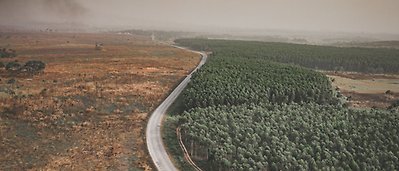
A new study shows that algae-eating fish are key to avoiding regime shifts of Hawaiian coral reefs. Photo: S. Zeff/Azote
New publication
Hawaiian reefs through the resilience lens
Algae-eating fish are key to avoiding regime shifts of Hawaiian coral reefs, study finds
- Study presents new methodology for detecting, visualising and defining multiple reef regimes across 302 sites in the Hawaiian archipelago
- Over half of the reefs studied in Hawaii belong to a third state dominated by turf algae,
- Sewage and other effluents from human settlements proved to be the second greatest factor in reef decline in Hawaii
With the world's coral reefs endangered by various threats such as global warming, ocean acidification, overfishing and pollution, there is an urgent need to anticipate and prevent further losses of coral and to reverse shifts in already degraded reefs.
Such challenges require a better understanding of the resilience of these complex ecosystems and of the human and natural factors threatening them.
This is the conclusion of a new study by Jean-Baptiste Jouffray, Magnus Nyström and Albert Norström, and others, in the latest issue of Philosophical Transaction of the Royal Society - Biological Sciences.
The new study is based on a collaboration with researchers from the Center for Ocean Solutions at Stanford University, National Oceanic and Atmospheric Administration, Scripps Institute of Oceanography and Conservation International-Hawaii.
Novel approach reveals the picture
Using one of the most comprehensive coral reef datasets available, Jean-Baptiste Jouffray and colleagues developed a new methodology for detecting, visualising and defining multiple reef regimes across 302 sites in the Hawaiian archipelago.
The paper is part of a special issue on marine regime shifts around the world and offers a promising avenue to use this novel approach for analysing other ecosystems too.
"While previous scientific debate has largely been centred around the shift between coral-dominated reefs and the undesired large fleshy algae-dominated reefs, we were surprised to find that over half of the reefs studied in Hawaii belong to a third state dominated by turf algae," explains Jouffray, lead author of the new study.
Turf algae are communities of smaller and more delicate algae that belong to a large number of different species.
This raises the question whether turf-dominated reefs are stable or transitional states moving towards macroalgae dominance, or conversely towards coral recovery. Time-series data showing changes in the reefs over a period of time will be required to investigate the question further.
Like fish, like reef
Higher numbers of herbivorous (algae-eating) fish proved to be the strongest indicator of reef state throughout the Hawaiian Islands. The greater the number of herbivorous fish found at a study site, the healthier the coral and the smaller the algal presence. However, deeper analysis of the fish distribution data revealed that type of herbivore is also important.
"For management purposes, it is not enough to consider herbivores as a group, since different functional groups with specific feeding behaviour may lead to different reef states. This opens up an avenue for more refined and efficient management of reefs," says Magnus Nyström.
Coral reef herbivorous fish can be categorised into three groups: grazers, scrapers and browsers. The grazers crop on algal turf, preventing the establishment and growth of larger fleshy macroalgae. Scrapers also feed on turf, but they remove some components of the reef substratum, providing bare areas for coral recruitment.
Finally, browsers consistently feed on macroalgae and may play a crucial role in reversing macroalgae-dominated states.
But people matter too
Avoiding regime shifts in coral reefs is important because coral reefs are among the most biologically diverse ecosystems on earth and harbour approximately 25% of all marine species.
They provide a wide range of ecosystem goods and services that are crucial for economic and societal development, such as food, coastal protection and income from tourism.
Further, the new study found that sewage and other effluents from human settlements proved to be the second greatest factor in reef decline in Hawaii, confirming findings elsewhere.
"These results highlight once again the need to reduce pollution run-off from human activities on land, in order to safe-guard the many ecosystem services generated by coral reefs," concludes Albert Norström.
Citation
Jouffray J-B, Nyström M, Norström AV, Williams ID, Wedding LM, Kittinger JN, Williams GJ. 2015 Identifying multiple coral reef regimes and their drivers across the Hawaiian archipelago. Phil. Trans. R. Soc. B 370: 20130268. http://dx.doi.org/ 10.1098/rstb.2013.0268
Jean-Baptiste Jouffray is a PhD student associated with the Stockholm Resilience Centre and the Global Economic Dynamics and the Biosphere (GEDB) Programme at the Royal Swedish Academy of Sciences.
Magnus Nyström's research is focused on the effects from human interventions, such as climate change, overfishing (including trade) and pollution, on ecosystem functions and processes - and how this impacts on resilience in ecological and social-ecological systems.
Albert Norström is research coordinator for the Programme on Ecosystem Change and Society (PECS) and is currently assessing and predicting regional coral reef resilience in the Hawaiian archipelago.






